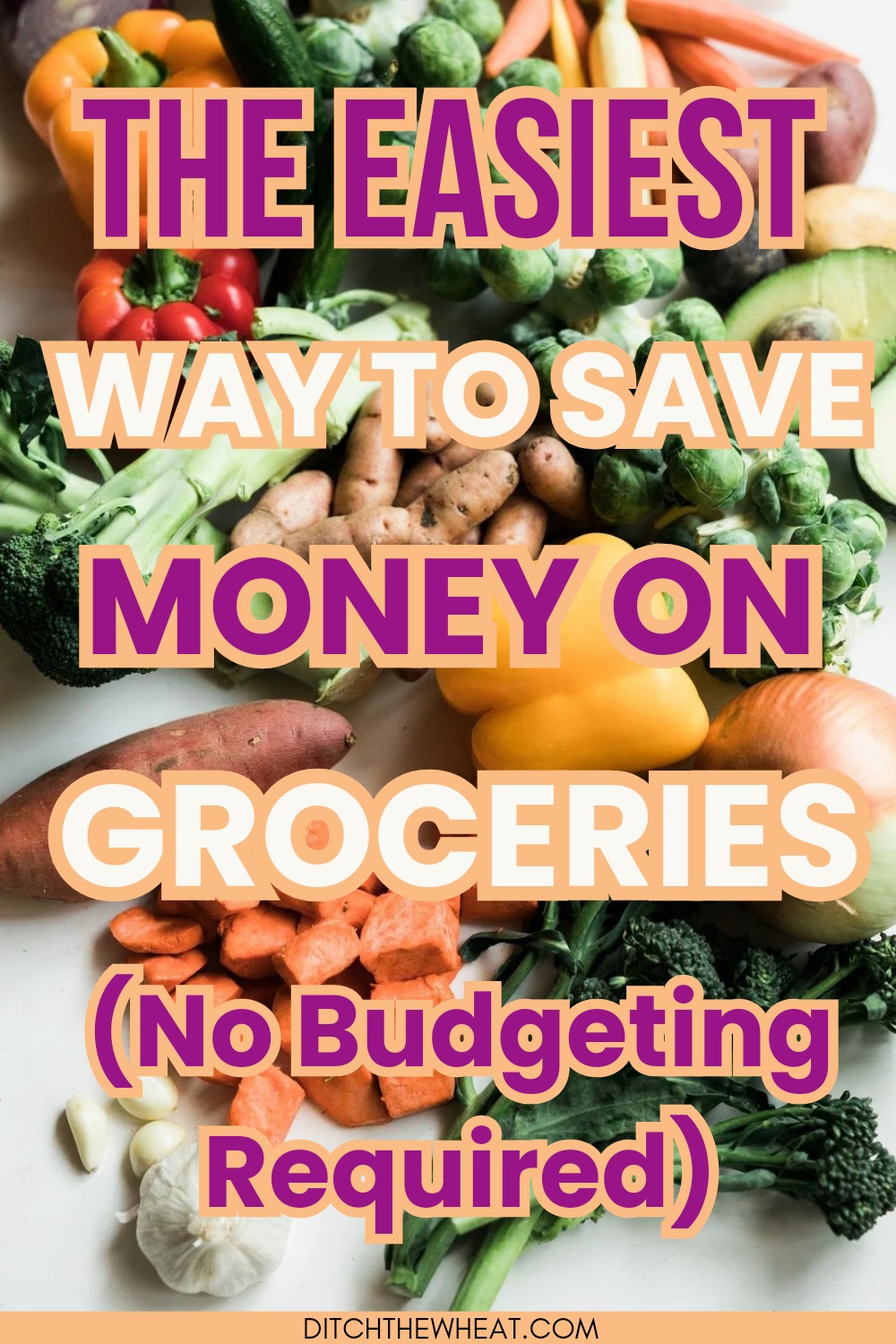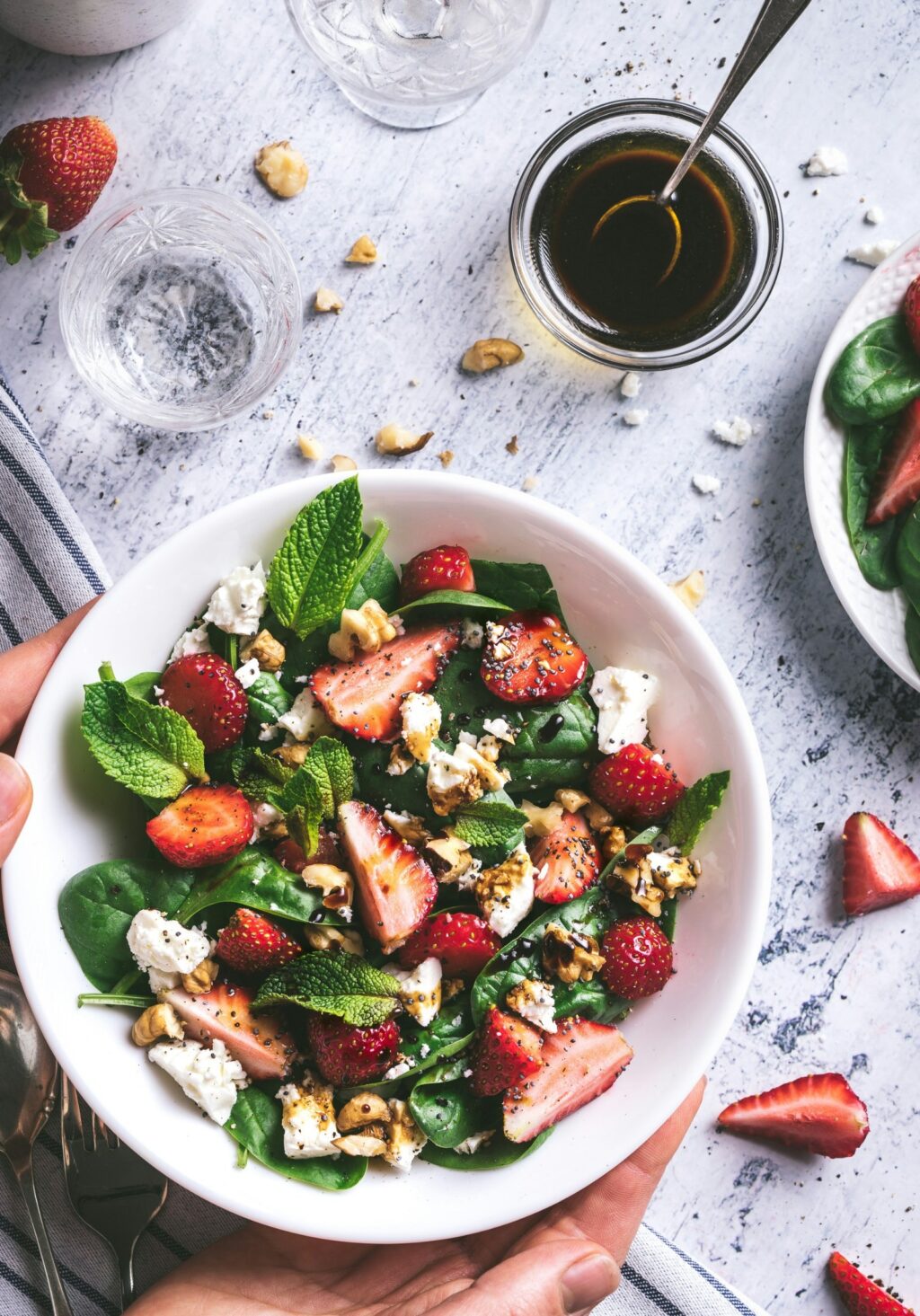The Easiest Way to Save Money on Your Groceries
This post contains affiliate links including Amazon affiliate links.
As grocery prices rise, people are looking for ways to save on food costs. Before you cut out your favorite snacks and fresh produce, consider looking for savings in your refrigerator. These tips help reduce the food you throw out, which can cut down your grocery spending.

The problem with food waste
Food waste is a costly problem for many households. Families may buy more than they eat, forcing them to throw out expired food.
Edward Jaenicke, a professor of agricultural economics at Penn State, completed a study in 2020 on food waste at the household level.
“Based on our estimation,” Jaenicke reported, “the average American household wastes 31.9% of the food it acquires. More than two-thirds of households in our study have food-waste estimates of between 20% and 50%.”
According to the EPA, this can translate into over $1,500 annually for a family of four. But this is also an opportunity for cost savings. Taking steps to reduce food waste in your household lets you keep buying the food your family likes and cut costs at the same time.

How to cut down on household food waste
To reduce food waste, start by observing your family’s purchasing and eating habits. Do you always buy spinach and end up throwing it out?
Assess what you’re buying too much of and throwing away. Then, try out some of these tips to use more of what you buy and throw out less.
Know when food is safe to eat
You never want to eat food that is beginning to go bad. Food that is rotted or growing mold can make you extremely sick, and you should always throw out any food you think might be bad rather than risk your health.
But just because the date printed on the package has passed does not mean the item is bad, according to the USDA. Manufacturers put dates on their products to help stores and consumers know when the food will be at its best. Manufacturers may use these labels:
- “Use by”, “best if used by” or “best by”: The manufacturer recommends that you consume the product before this date. The quality will drop off significantly after this date, and it will likely become unsafe to eat.
- “Sell by”: The manufacturer recommends stores not stock the product after the “sell by” date. It will most likely still be safe to eat.
Check for signs of spoiled food instead of relying solely on expiration dates. Look for unusual smells, flavors, and signs of rot or mold that could indicate they are bad.
You can also use expiration dates to help you decide what to buy at the grocery store. Consider buying long shelf-life foods. If you purchase dairy, eggs, and other perishables, choosing items with a date label that is further out will likely mean they will last longer.
Freeze the excess! I often freeze spinach, peppers, mushrooms, etc if I’m not going to use them before they go bad. I dice the peppers and slice the mushrooms. They are good for using in omelets, pizza, chili, soups, etc. I add the frozen spinach to soup.

Practice FIFO: First in, first out
A standard in restaurants, FIFO means that the first item that you put in needs to be the first item that you take out. If you have two of the same item, use the one that will expire sooner first.
When putting away groceries, try putting new items towards the back of your fridge or pantry. A few moments of rearranging now will make it easier to grab the right item later.

Optimize food storage to prevent waste
Proper storage can extend the lifetime of perishable foods. On the other hand, incorrect storage could cause your foods to expire well before the “use by” date. Use these food storage tips to make food last longer:
- Keep your fridge at the right temp: For food safety, a refrigerator needs to be 40 F or less, but the optimal temperature is between 35 F and 38 F. Keeping your fridge between those temperatures will make dairy and vegetables last as long as possible.
- Store items quickly: Every moment a perishable item spends at room temp shortens its lifespan. Put groceries away as soon as you get home, and consider storing cold items in a cooler if the drive from the grocery store home is a long one.
- Use airtight containers: Use airtight containers to prevent food spoilage. Transfer pantry items to sealed plastic or glass containers. Store leftover canned goods in sealed containers, not in the can. Keep fruits, vegetables, and herbs in sealed containers to prolong freshness. For instance, storing strawberries correctly can keep them fresh for up to ten days.
- Freeze what you can’t use: Many foods will last up to six months or more in the freezer. Learn what foods freeze well and move any extra items you have into your freezer.

Avoid buying perishables in bulk
Buying in bulk can be a cost-saver when you are able to eat everything you buy. But if you are throwing things out, bulk purchasing can cost you more in the long run.
Save buying in bulk for items with a long shelf life, like frozen foods, grains, cereals, and canned goods. For perishables, try to buy the amount that you know your family will eat. Look for:
- Smaller portions: Take advantage of products that come in a variety of sizes. Milk and its alternatives often have options for pint, quart, and gallon sizes. Cheese, yogurt, eggs, and other perishables are also often available in different sizes.
- Loose produce: Buy single items of produce rather than bags. This lets you get the amount you need. Some grocery stores will even let you buy a single stalk of celery or half a watermelon.
- Share with friends and family: If you do want to take advantage of a great deal on a bulk purchase, split the cost and the food with others.

Find recipes for odds and ends
Once you’ve figured out what kinds of foods you always seem to have extra of, find some recipes that can use them up. Dishes like stir-fries, omelets, and soups are great for using up extra vegetables. Fruit smoothies can help you go through fruit, milk, and yogurt quickly.
Start reducing household food waste
If you are a home cook looking to save money, try a few of these tips to reduce food waste in your kitchen. Experiment with how you shop, store your food, and cook to see what works best for your family.
This article originally appeared on Food Drink Life.
More food storage tips to avoid waste
- How to Properly Store Onions
- The Best Way to Store Mushrooms
- How to Freeze Avocados
- How to Properly Store Strawberries
- Proper Way to Store Potatoes
DISCLOSURE: Not intended for the treatment or prevention of disease, nor as a substitute for medical treatment, nor as an alternative to medical advice. Use of recommendations is at the choice and risk of the reader. Ditch the Wheat is a participant in the Amazon Services LLC Associates Program. As an Amazon Associate I earn from qualifying purchases. I may receive monetary compensation or other types of remuneration for my endorsement, recommendation, testimonial and/or link to any products or services from this blog. I only endorse products that I believe in.

Jerè Cassidy
Jerè Cassidy is the writer and recipe developer behind the blogOne Hot Oven. A passion for all things food-related led her to culinary school to expand her baking skills and now to share easy recipes for all home cooks and bakers of all skill levels. When not in the kitchen, Jerè likes to travel far and wide to find delicious food.
Gluten Free Resources
Do you need help with gluten free meals?
I recommend this meal-planning app. It makes cooking gluten free dinners extremely easy and family-friendly.
What gluten free snacks can I eat?
Lots! I have a ton of practical gluten free snack recipes in my cookbook.
How can I eat dessert on a gluten free diet?
You can 100% eat dessert while eating gluten free. Try my dessert cookbook for easy gluten free dessert recipes.
How do I know what is gluten free and what isn’t?
I have a whole section is it gluten free?
How do I make substitutions?
If you need substitution advice I created a ton of resources here.









